Can quirky homes get Qlders on the property ladder?
From Tatooine-style houses to bunkers, Queenslanders have shown they’re willing to think outside the square with wacky homes - ingenuity an expert says may help ease the housing crisis.
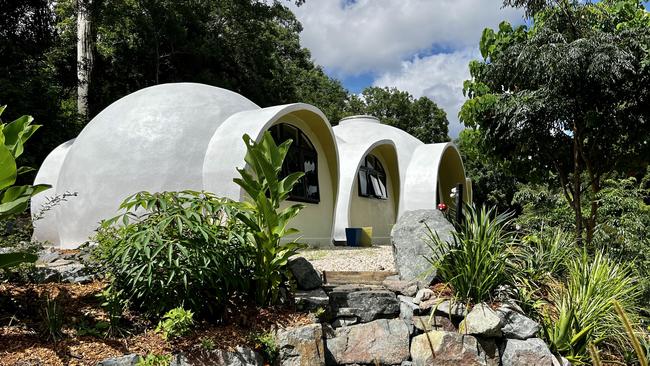
Queenslanders have made some of the quirkiest things into homes and one prominent architecture expert reckons this ingenuity may just help the next generation of homebuyers during the housing crisis.
Throughout the Sunshine State people are living in planes, trains, space station-like bubbles, war bunkers and even a Barbie dream house, with their creations driven by budget constraints, inventiveness and a desire to standout.
But where some may view these quirky residences as oversized curios, Grand Designs Australia and Restoration Australia host Anthony Burke sees them as the work of trailblazers.
The professor of architecture said experimenting with home designs could lead to more affordable homes for Australians.
“We’re going to have to invent our way out of this (housing) problem,” he said.
“Australia is very risk adverse when it comes to our houses and that hasn’t budged much since the 1950s
“We need Australians to engage with a bit more risk-taking with our architecture.
“And while (quirky homes) aren’t necessarily the answer to the housing crisis, they are a good step towards breaking us out of business as usual.”
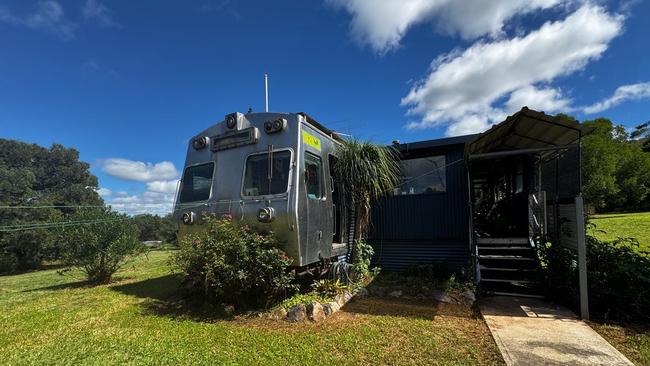
Mr Burke said he was seeing an increase in Australians willing to experiment with home building and renovation, particularly younger people.
“There’s a new generation of Australians who can’t afford a new home,” he said.
“They are the group that is going to reinvent what a house looks like because they can’t afford a house like it has looked for the past 70 years.
“(Quirky homes) are necessary to change our thinking.
“I think we’re going to see more of them is the next 20 years, the way we haven’t in the past 40 years.”
Buyer’s agent and managing director of Cohen Handler, Jordan Navybox said while “quirky” homes were once the purview of eccentrics, unique luxury homes were growing in popularity in South East Queensland.
“Prestige buyers do want a level of exclusivity and uniqueness,” he said.
“They want a home that is one-of-one.
“Brisbane is finally seeing this fashion and lifestyle movement and there are more architects pushing the boundaries in Brisbane.
“Rob Mills is a Melbourne architect doing a lot in Brisbane right now and so is Luigi Rosselli from Sydney.
“It’s super fashionable now to have a really beautiful and unique house and the more fashionable that becomes, the more boundary pushing we will see.”
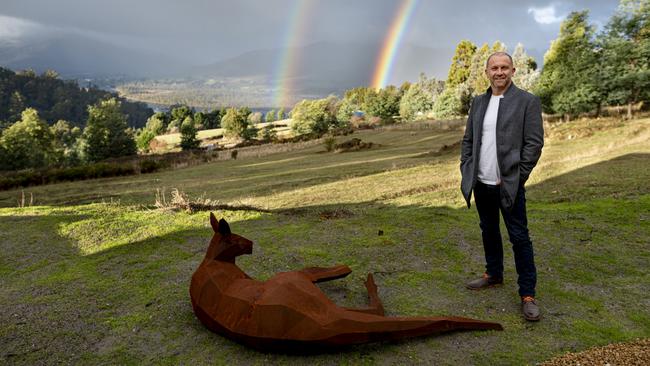
Lynn Malone of Queensland Sotheby’s, who is selling ‘Alkira’, a futuristic concrete residence built above a lake in Cape Tribulation, said it was more difficult to sell a quirky home but the trick was to know the buyers to target.
“Buyers’ reactions are often polarised — some are captivated by the unexpected and folly, while others have concerns about comparable property sales and valuations,” she said.
“The objective is to identify and reach the niche audience that aspires to acquire a property such as ‘Alkira Resort House’ and has the financial capability to purchase.
“Too much uniqueness, such as a remote location in Far North Queensland, can be a drawback for a traditional buyer.
“However, most prospective buyers for ‘Alkira’ view remoteness, privacy, and exclusivity as compelling attributes.”
Ms Malone said truly unique homes attracted strong interest when they hit the market.
“The challenge lies in translating that tremendous interest into genuine buyer inquiries,” she said.
Ms Malone said she had seen an increase in buyers willing to consider more quirky homes.
“Especially in the luxury real estate sector, buyers seek properties that offer authenticity, design innovation, and a connection with nature, particularly when buying a second or third residence,” she said.
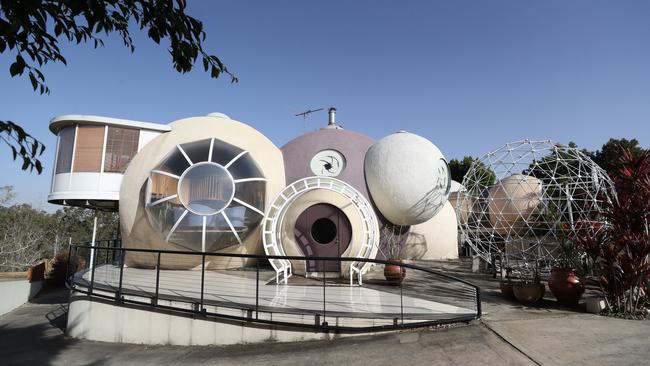
Mr Burke said in general, owners of quirky homes could be broken down into two groups – those looking to experiment and those looking to express their personality.
“Some are inventions by necessity, such as inhabiting a train carriage because that’s all they could afford,” he said.
“Some, like the Bubble House (in Ipswich), are a labour of love and an experimental thesis.
“There’s also the really formally flamboyant house, which are more about puffing up and saying ‘I’m here, I’m doing something different’.
“It’s not an idea, it’s a power play.
“But the person with the lifelong thesis they’ve had in sustainable housing, that’s a labour of love and that comes from a strength of idea.”
Mr Burke said Aussies tended to appreciate the passion builds.
“There is an army of good taste cops out there that shake their but most people see something usual like the Bubble house and say ‘good on you for having a crack’,” he said.
“Australians, we love the underdog, the renegade, the brave eccentric.”
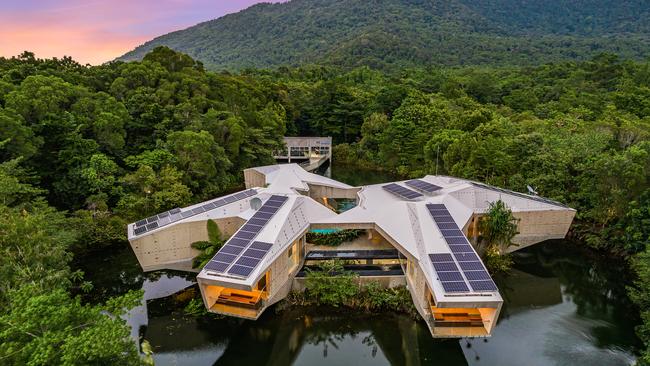
Mr Burke said most who set out to build a unique home were the type to care little about the opinions of others.
“These are kind of places that stay in a family for as long as someone can live independently and, by that time, they’ve become landmarks,” he said.
“They become a bit precious, think mid-century Seidler homes and Robin Boyd homes.”
Mr Burke said he appreciated those homeowners, builders and architects ready to take the risk and do something outside the box.
“New materials, new technology, new processes – they will take a while to land in meaningful ways, but we need early adopters,” he said.
“Things like rammed earth are already coming back into play, which is good to see.”
Mr Burke said he hoped to see the experimentation occurring overseas start to influence Australians homeowners.
“They are 3D printing houses in Texas, mushroom houses grown and built out of mushroom are happening in the US and Europe, and we’re even seeing architectural structures made by silkworms.”
SOME OF QUEENSLAND’S QUIRKIEST HOMES
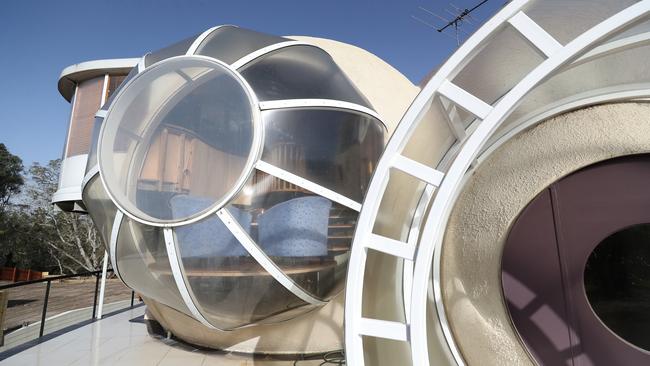
1. Bubble House – Karalee
Built by architect owner Graham Birchall, this home took a decade to complete and is made from 11 intersecting circular domes.
The house began as a thesis idea more than 40 years ago and ended up a 20-room family home with 1050 sqm of floor space.

2. Alkira Resort House – Cape Tribulation
This remote concrete masterpiece was designed by visionary architect Charles Wright and is positioned over a man-made lake and surrounded by 30ha of wilderness including a beach.
It took the original owner, stamp collector and property developer Rob Perry, five years to design and build the six bedroom, seven bathroom house.
The unusual swimming pool shape and surrounding roofline is based on the silhouette of the head on the ‘One Pound Jimmy’ postage stamp issued in Australia in the 1950s.
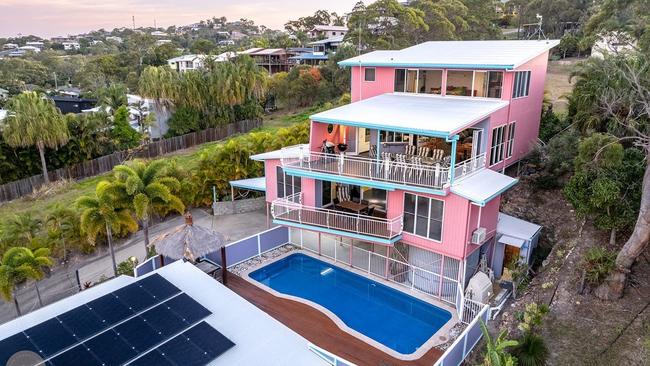
3. Barbie Dream House – Agnes Waters
This eye-catching home is spread across four levels with a party zone that includes a built-in bar, space for a pool table and guest bedrooms.
Like any good dream house, it has a bright colour scheme, a pool and plenty of space to entertain or just relax.
You can even see the ocean from the decks.
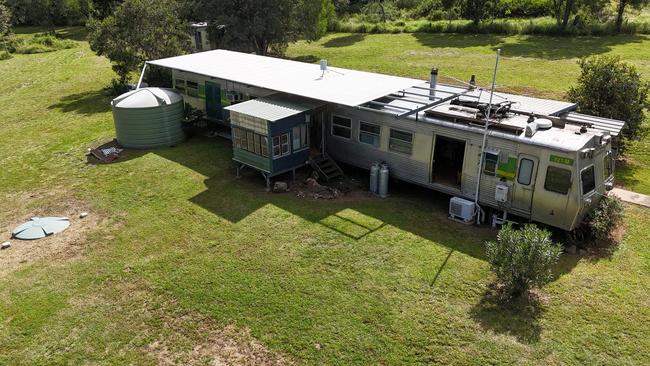
4. Train carriage home – Booie
Marketed as one of a kind and currently for sale, this 2.67ha property comes with a home created from a Melbourne train carriage.
The stainless steel carriage, measuring around 23m long and 2.9m wide, has a kitchen, dining, and lounge area, complete with original train handrails, a bathroom and a bedroom. There is also an added second bedroom and deck plus the block has a big shed and dam.
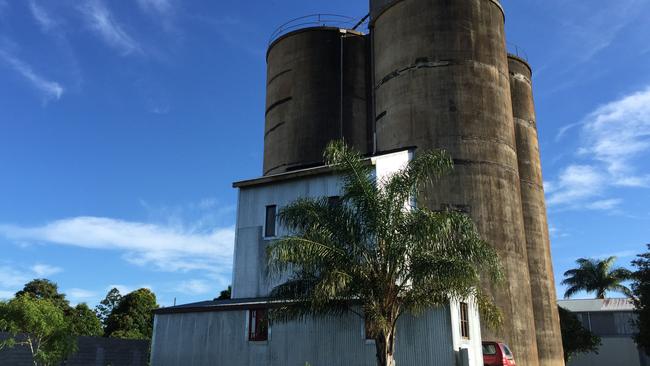
5. Silo house – Kairi
This two-bedroom, one bathroom home is built into the side of historic grain silos that were bought for just $5000 in 2010.
The home sits in what was originally the office and weigh station, but all the machinery from the silos has been kept on site.
The silos themselves are accessed from inside the home, with a door opening to the first two silos and a shaft that runs underneath all four.
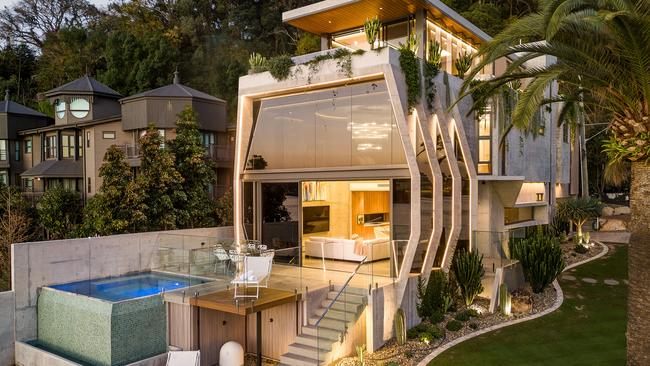
Designed to look like the gills of a shark, this modern riverside home is spread across four levels and has four bedrooms and four bathrooms.
Inside there is a 6.3m high void, marble-clad fireplace, a master suite that takes up an entire level, a round bathtub sitting under a skylight and a four-car stacker in the garage.
The property looks out over the Brisbane River and is currently for sale.

7. Chateau sur-Ciel – Willow Vale
The name of this Gold Coast property aptly translates to ‘castle in the sky’.
Designed and built over a period of ten years by the original owners, the home has medieval-themed games room, a moat, a chapel and horse stables.
The six-bedroom home was inspired by a love of European art and architecture.
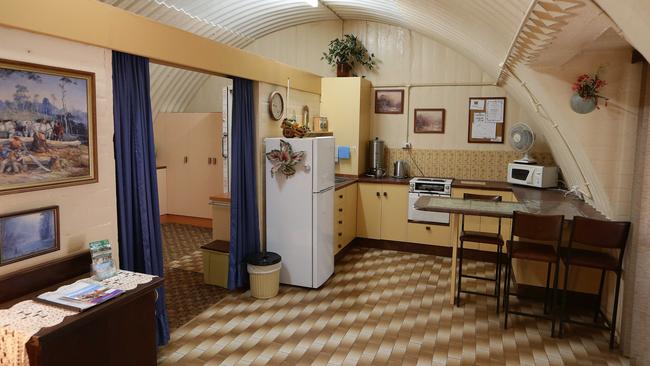
8. Bunker house – Miles
The couple behind Possum Park Caravan Park, 20km north of Miles, turned a WWII bunker into their home after buying an abandoned air force base in 1986.
The 12m-long ammunition bunker, made from 10-inch thick concrete and covered with 1m of dirt, contains a bedroom, bathroom, office and open plan kitchen and living room.
The couple have also converted more bunkers, an army igloo, a plane and train carriages into guest accommodation.
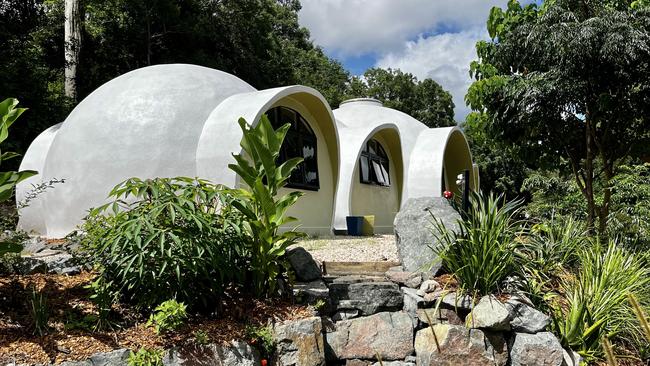
9. Elysian Falls dome house – Flaxton
Artist Cath Wild designed and built this aircrete dome house on her property in the Sunshine Coast hinterland.
The four-dome structure is the first aircrete dome to have council build approval and covers just under 90 sqm.
Ms Wild made about 6000 aircrete blocks to complete the home and the build took about three years.
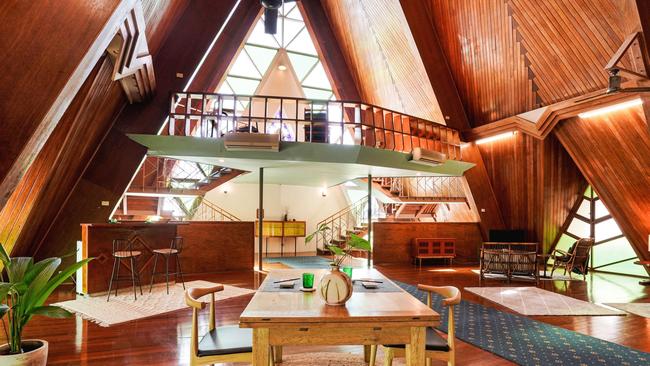
10. Renovated church – Innisfail
The former St Andrew’s Presbyterian Memorial Church in Innisfail isn’t your typical church – it was designed by architect Eddie Oribin in the modernist organic style of Frank Lloyd Wright.
Now converted to a private residence, the home has triangular brickwork, patterned screen walls with green glass inserts, tulip oak walls, polished timber floors, original diamond shaped leadlight windows, a burning tree motif and a copper flower bowl.
There are three levels with open plan living, dining and kitchen, and a bedroom on a mezzanine level.
Originally published as Can quirky homes get Qlders on the property ladder?
